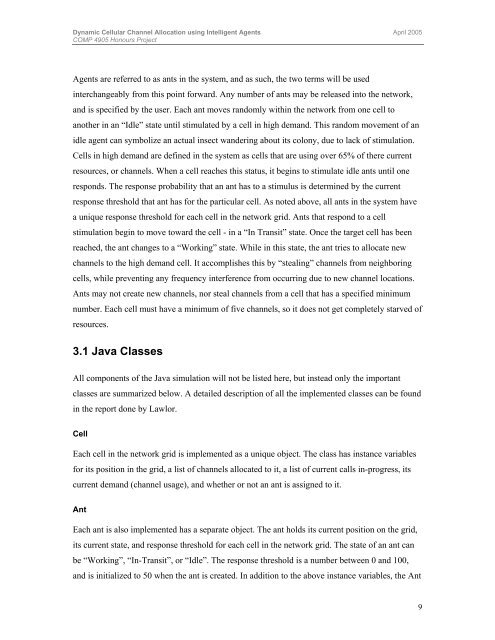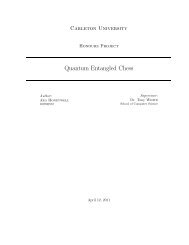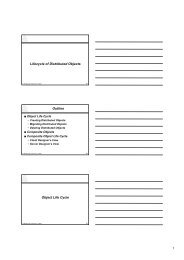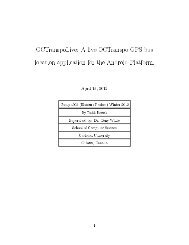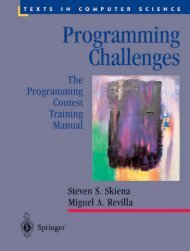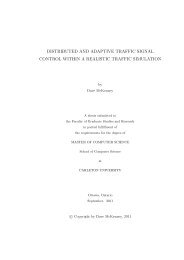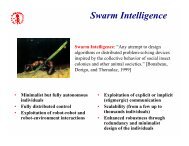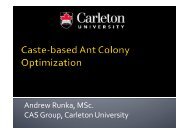Gayan Abeysundara - Complex Adaptive Systems Group
Gayan Abeysundara - Complex Adaptive Systems Group
Gayan Abeysundara - Complex Adaptive Systems Group
Create successful ePaper yourself
Turn your PDF publications into a flip-book with our unique Google optimized e-Paper software.
Dynamic Cellular Channel Allocation using Intelligent Agents April 2005COMP 4905 Honours ProjectAgents are referred to as ants in the system, and as such, the two terms will be usedinterchangeably from this point forward. Any number of ants may be released into the network,and is specified by the user. Each ant moves randomly within the network from one cell toanother in an “Idle” state until stimulated by a cell in high demand. This random movement of anidle agent can symbolize an actual insect wandering about its colony, due to lack of stimulation.Cells in high demand are defined in the system as cells that are using over 65% of there currentresources, or channels. When a cell reaches this status, it begins to stimulate idle ants until oneresponds. The response probability that an ant has to a stimulus is determined by the currentresponse threshold that ant has for the particular cell. As noted above, all ants in the system havea unique response threshold for each cell in the network grid. Ants that respond to a cellstimulation begin to move toward the cell - in a “In Transit” state. Once the target cell has beenreached, the ant changes to a “Working” state. While in this state, the ant tries to allocate newchannels to the high demand cell. It accomplishes this by “stealing” channels from neighboringcells, while preventing any frequency interference from occurring due to new channel locations.Ants may not create new channels, nor steal channels from a cell that has a specified minimumnumber. Each cell must have a minimum of five channels, so it does not get completely starved ofresources.3.1 Java ClassesAll components of the Java simulation will not be listed here, but instead only the importantclasses are summarized below. A detailed description of all the implemented classes can be foundin the report done by Lawlor.CellEach cell in the network grid is implemented as a unique object. The class has instance variablesfor its position in the grid, a list of channels allocated to it, a list of current calls in-progress, itscurrent demand (channel usage), and whether or not an ant is assigned to it.AntEach ant is also implemented has a separate object. The ant holds its current position on the grid,its current state, and response threshold for each cell in the network grid. The state of an ant canbe “Working”, “In-Transit”, or “Idle”. The response threshold is a number between 0 and 100,and is initialized to 50 when the ant is created. In addition to the above instance variables, the Ant9


